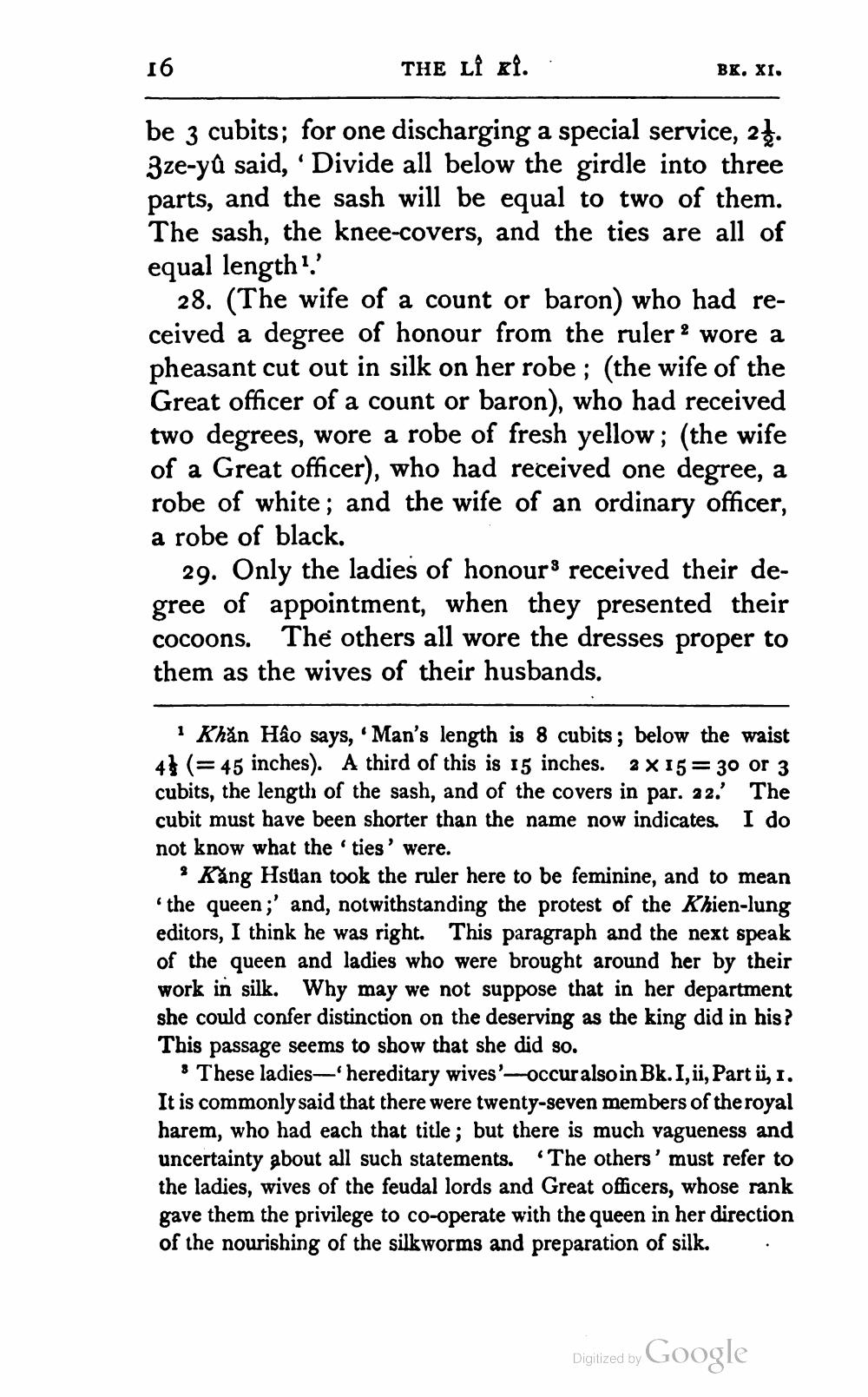________________
16
THE LI Kİ.
be 3 cubits; for one discharging a special service, 2. 3ze-yû said, 'Divide all below the girdle into three parts, and the sash will be equal to two of them. The sash, the knee-covers, and the ties are all of equal length'.'
BK. XI.
28. (The wife of a count or baron) who had received a degree of honour from the ruler 2 wore a pheasant cut out in silk on her robe; (the wife of the Great officer of a count or baron), who had received two degrees, wore a robe of fresh yellow; (the wife of a Great officer), who had received one degree, a robe of white; and the wife of an ordinary officer, a robe of black.
29. Only the ladies of honours received their degree of appointment, when they presented their Cocoons. The others all wore the dresses proper to them as the wives of their husbands.
1 Khăn Hâo says, 'Man's length is 8 cubits; below the waist 4(=45 inches). A third of this is 15 inches. 2 x 15 30 or 3 cubits, the length of the sash, and of the covers in par. 22. cubit must have been shorter than the name now indicates. not know what the ties' were.
The I do
2 Kăng Hsuan took the ruler here to be feminine, and to mean 'the queen;' and, notwithstanding the protest of the Khien-lung editors, I think he was right. This paragraph and the next speak of the queen and ladies who were brought around her by their work in silk. Why may we not suppose that in her department she could confer distinction on the deserving as the king did in his? This passage seems to show that she did so.
These ladies-'hereditary wives'-occur also in Bk. I, ii, Part ii, 1. It is commonly said that there were twenty-seven members of the royal harem, who had each that title; but there is much vagueness and uncertainty about all such statements. The others' must refer to the ladies, wives of the feudal lords and Great officers, whose rank gave them the privilege to co-operate with the queen in her direction of the nourishing of the silkworms and preparation of silk.
Digitized by
Google




